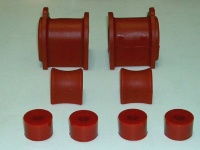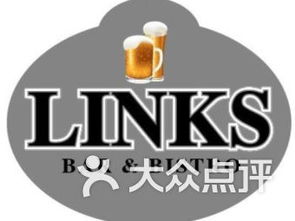Understanding Sway Bar Bushings and Links: A Comprehensive Guide
When it comes to enhancing the performance and handling of your vehicle, sway bar bushings and links play a crucial role. These components are often overlooked, but they significantly impact the overall driving experience. In this article, we will delve into the details of sway bar bushings and links, exploring their functions, types, installation, and maintenance. Let’s get started.
What are Sway Bar Bushings and Links?

Sway bar bushings and links are essential components of a vehicle’s suspension system. The sway bar, also known as a stabilizer bar, is a metal bar that connects the left and right wheels on the same axle. Its primary function is to reduce body roll during cornering, enhancing stability and handling. Sway bar bushings and links are the parts that connect the sway bar to the vehicle’s frame and suspension components.
Functions of Sway Bar Bushings and Links

1. Reducing Body Roll: As mentioned earlier, the sway bar helps reduce body roll during cornering. This is achieved by transferring the forces between the left and right wheels, keeping the vehicle stable and predictable on the road.
2. Enhancing Handling: By reducing body roll, sway bar bushings and links contribute to improved handling. This allows the driver to maintain better control of the vehicle, especially at higher speeds and during aggressive maneuvers.
3. Absorbing Vibrations: Sway bar bushings act as shock absorbers, absorbing vibrations and noise from the road. This results in a smoother and quieter ride.
Types of Sway Bar Bushings and Links

1. Rubber Bushings: These are the most common type of sway bar bushings. They are made of rubber and offer a balance between comfort and performance. However, they can wear out over time, leading to reduced handling and increased noise.
2. Polyurethane Bushings: Polyurethane bushings are more durable than rubber bushings and offer better performance. They provide increased stability and handling, but they can be more expensive and may require more effort to install.
3. Metal Bushings: Metal bushings are the most durable option, offering the best performance. However, they can be noisy and may require professional installation.
Types of Sway Bar Links
1. Ball Joints: Ball joints are the most common type of sway bar link. They allow for smooth movement and are relatively easy to install. However, they can wear out over time, leading to reduced handling and increased noise.
2. Heim Joints: Heim joints offer better durability and performance than ball joints. They are more expensive and may require professional installation, but they are worth the investment for serious performance enthusiasts.
Installation of Sway Bar Bushings and Links
Installing sway bar bushings and links can be a challenging task, especially for those without experience. Here are some general steps to follow:
- Loosen the lug nuts and remove the wheels.
- Remove the sway bar links and bushings from the vehicle.
- Install the new bushings and links, ensuring they are properly aligned.
- Reinstall the wheels and tighten the lug nuts.
It is recommended to consult a professional mechanic or refer to the vehicle’s manual for specific instructions.
Maintenance of Sway Bar Bushings and Links
Regular maintenance is crucial to ensure the longevity and performance of sway bar bushings and links. Here are some tips:
- Check for signs of wear and tear, such as cracks or excessive play in the bushings and links.
- Replace worn-out bushings and links promptly to maintain optimal performance.
- Regularly inspect the sway bar bushings and links during routine maintenance checks.
Conclusion
Sway bar bushings and links are essential components for enhancing the performance and handling of your vehicle. By understanding their functions, types, installation, and maintenance, you can ensure that your vehicle remains stable, predictable, and enjoyable to drive. Remember to consult a professional mechanic for installation and maintenance, and always prioritize safety on the road.
| Component | Description | Function |
|---|---|---|
| Sway Bar Bushings | Connect
|














